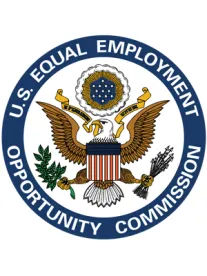On January 7th, the EEOC released proposed new regulations under the Americans with Disabilities Act (ADA) and the Genetic Information Nondiscrimination Act (GINA) for employer-offered wellness programs. (As of January 15, 2021, the proposed regulations still have not been published in the Federal Register.) If finalized, the proposed regulations would clarify the extent to which wellness programs that comply with separate regulations issued by the IRS, DOL and HHS on wellness plans issued under Affordable Care Act may be constructed to comply with the ADA and GINA. It remains to be seen whether the Biden administration will move the proposal forward or go back to the drawing board.
Background
Many employers offer wellness programs to encourage healthy habits, increase productivity, and reduce health plan costs. Depending on the design of the program and whether incentives are offered, wellness programs raise a number of issues under various federal laws, including ERISA, HIPAA, the ADA, GINA, COBRA, and anti-discrimination laws like the ADEA and Title VII of the Civil Rights Act of 1964. In the last 20 years, the following rules have been of particular concern for wellness programs that offer incentives, such as a discount on health plan premiums or a prize:
-
HIPAA prohibits discrimination on the basis of a health factor (such as health status), a medical condition, medical history, or genetic information.
-
The ADA requires reasonable accommodations for disabilities and prohibits disability-related medical examinations unless they are “voluntary.”
-
GINA prohibits employers from requesting or using genetic information, which includes family medical history, unless the information is provided “voluntarily.”
The concern is that not providing a wellness plan incentive to someone who fails to satisfy the required conditions can be viewed as a penalty that discriminates on the basis of a health factor and/or that the opportunity cost of giving up an incentive effectively makes the program involuntary.
HIPAA Regulations
Longstanding HIPAA regulations, most recently updated in 2013 to incorporate provisions of the Affordable Care Act, provide a roadmap for a wellness program to comply with HIPAA’s non-discrimination rules. These regulations divide wellness plans into two categories:
-
Participatory programs, under which there are no significant impediments to participation (physical or otherwise) and incentives are not conditioned on performing any activity that relates to a health factor or on achieving a health factor target. Examples of participatory programs include reimbursement for gym membership or offering an incentive to complete a health risk assessment or get a biometric screening; and
-
Health-contingent programs, where an incentive is conditioned on performing an activity related to a health factor or achieving a health factor target. A health-contingent program can be “activity-based” (where an incentive is conditioned on completing an activity related to a health factor, such as daily exercise, without any requirement to achieve a particular outcome) or “outcome-based” (where an incentive is conditioned on achieving an outcome, such as reducing cholesterol levels or BMI).
The HIPAA regulations allow incentives for participatory programs without restriction, provided they are offered to everyone, and allow health-contingent programs if the following requirements are satisfied:
-
The program must be reasonably designed to promote health or prevent disease;
-
The program must be made available to all similarly situated individuals and provide opportunities to qualify for the incentive at least annually;
-
The program must offer reasonable alternatives for individuals for whom meeting the required standard (e.g., completing an exercise regimen or reducing cholesterol or BMI) is unreasonably difficult due to a medical condition; and
-
The value of the incentive must not exceed 30% of the applicable health insurance premium (the employee-only premium if the program is offered only to employees, or a family premium if the program is offered to family members). The percentage may be up to 50% for tobacco cessation programs.
Although the HIPAA regulations provided clear standards for wellness programs, the EEOC warned that a program complying with the HIPAA regulations might not comply with separate requirements under the ADA, GINA, or other federal laws. In particular, the EEOC warned that offering incentives to test for conditions like BMI and cholesterol might violate the ADA’s prohibition against medical examinations that are not voluntary, and that offering incentives to complete a health risk assessment that includes family medical history might violate GINA’s prohibition against involuntary collection of genetic information.
2016 EEOC Regulations Under the ADA and GINA
In 2016, the EEOC issued regulations that resolved the uncertainty under both the ADA and GINA. Based on comments from stakeholders, the 2016 EEOC regulations said that incentives (whether as a reward or a penalty) would not make a program involuntary if the incentives were not exceedingly valuable. For this purpose, the EEOC regulations carried over the 30% and 50% caps from the HIPAA regulations, but with slight adjustments. The 2016 EEOC regulations did not distinguish between programs offered inside or outside of the context of an employer-sponsored group health plan.
The clarity afforded by the 2016 EEOC regulations was short-lived, however. By order of a federal judge, the regulations were vacated, because the EEOC had not provided sufficient data to support its conclusion that 30% (50% for smoking cessation) was the appropriate line to establish that a program was still voluntary.
The New EEOC Proposal
After reconsideration, the EEOC now has issued new proposed regulations under both the ADA and GINA. The proposed regulations address the court’s concern with the 2016 regulations by specifying that any incentive that is more than de minimis would render a program involuntary. But the proposed ADA regulation offers a new “safe harbor” that would allow health plans to offer bigger incentives to participate in certain health-contingent wellness programs—but not to provide family medical history or other genetic information—if the requirements under the HIPAA regulations are satisfied.
De Minimis Incentive Standard
The proposed regulations provide that any incentive that is more than de minimis generally renders a program involuntary. The proposed regulations do not define “de minimis,” but they offer a few examples: A water bottle or a gift card of “modest” value would be de minimis; but an incentive as small as $50 per month, a gym membership, or a plane ticket would exceed the de minimis threshold.
Like the 2016 regulations, the proposed regulations also prohibit employers from requiring participation, limiting coverage or benefits due to lack of participation, taking adverse action for non-participation or failure to achieve a health outcome, or requiring consent to the disclosure of information to a third party. In addition, the proposed ADA regulations maintain the requirement from the 2016 regulations that information regarding medical conditions or histories be kept confidential and maintained in separate files (with limited exceptions). Both regulations limit the employer’s ability to receive employee information other than in aggregate form.
New ADA “Safe Harbor” for Health-Contingent Programs in Group Health Plans
As noted above, the proposed ADA regulations (but not the proposed GINA regulations) contain an important exception to the de minimis incentive limitation that is designed to align with the HIPAA framework. This exception is based on an ADA rule that allows an entity administering a benefit plan to address underwriting risks to the extent not inconsistent with state law. As proposed, a wellness program can qualify for this safe harbor if the following conditions are satisfied:
-
The program is designed based on risks and not as a subterfuge to evade the purposes of the ADA’s equal employment provisions.
-
The program is a health contingent program that is integrated into (or independently qualifies as) a group health plan that is subject to the HIPAA regulations. The proposed rules outline various factors for determining whether a program is integrated into a group health plan—for example, whether the incentive is limited to employees enrolled in the plan, whether the incentive is tied to cost sharing or premiums under the plan, whether the program’s vendor has a contract with the plan, and whether the plan includes the welfare program as a term of coverage.
-
The value of the incentive falls within the limit set by the HIPAA rules (30% of the cost of coverage, or 50% for programs designed to reduce tobacco use).
The proposed GINA regulations do not contain a similar exception. Accordingly, incentives that are more than de minimis may not be conditioned on an employee providing family medical or other genetic information. (For this purpose, a spouse’s medical history generally counts as family medical information.) For example, if an incentive is offered to complete a health risk assessment, employees would need to be told that they can qualify for the incentive even if they do not respond to the questions requesting family medical history or other genetic information.
Comments Sought
A comment period will be open for 60 days after the proposed regulations are published in the Federal Register. Specific areas about which the EEOC is seeking input include whether the regulations should include disclosure requirements, what types of incentives should be treated as de minimis, and how employers use information from health risk assessments and biometric screenings.
Proskauer Perspective
The proposed regulations balance the need to prohibit incentives that have a coercive effect, while still clearing a path wellness programs that rely on testing and health risk assessments to control plan costs. Time will tell whether the rules are finalized in their current form. In the meantime, employers maintaining wellness programs should consult with counsel on how best to manage compliance obligations and mitigate risk.




 />i
/>i

